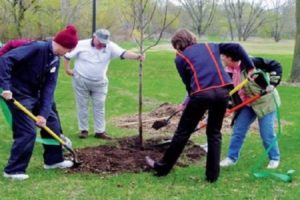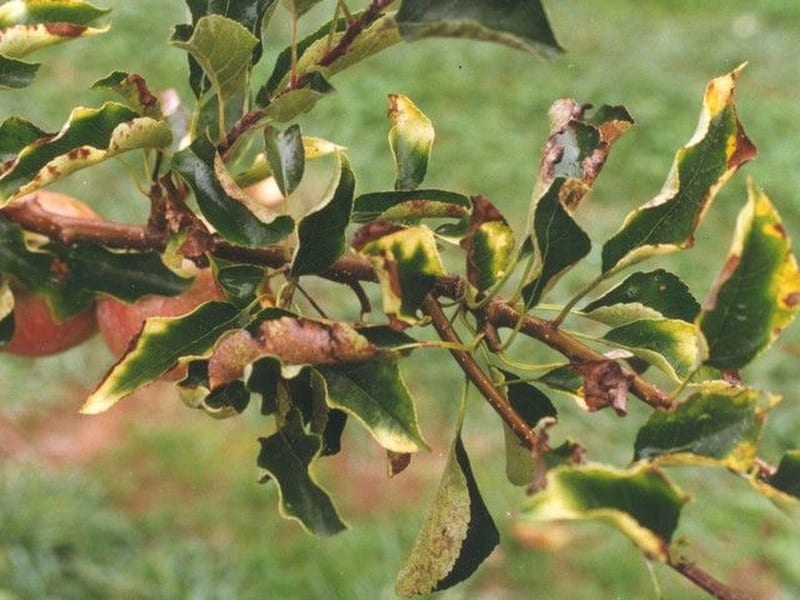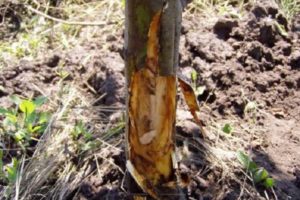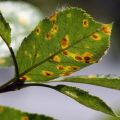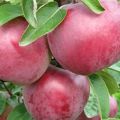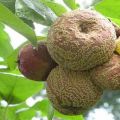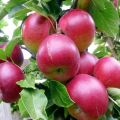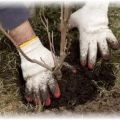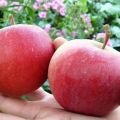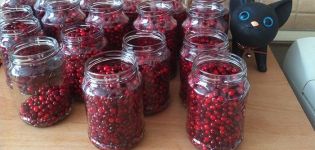Causes and symptoms of apple moniliosis, how to treat the disease with various means
From moniliosis on an apple tree, you can lose 80% of the crop. Fungal infection affects not only the fruits of pome crops, all stone fruits suffer from fruit rot: cherries, peaches, plums, apricots. Timely processing of the crown of trees, a set of preventive measures prevent the spread of infection in the garden.
Content
- 1 Who is the causative agent of the disease
- 2 Forms of moniliosis
- 3 Stages
- 4 Optimal conditions for development
- 5 How does infection occur
- 6 Description of the disease
- 7 Symptoms and first signs of infection
- 8 What is the danger of fruit rot for an apple tree
- 9 Ways to protect apple trees from moniliosis
- 10 How to treat if an infection has occurred
- 11 Scheme and processing time
- 12 How long can it take to get rid of fruit rot
- 13 Resistant apple varieties
Who is the causative agent of the disease
The disease is caused by the ubiquitous fungus. The causative agent monilinia fructigena is ubiquitous. Apple trees growing in temperate and warm climates suffer from it equally. The fungus monilinia fructigena damages apples, pears and stone fruits.The causative agent of monilinia mali is highly specialized. It infects only one type of plant, only apple and pear trees suffer from it. This type of infection is common in the southern regions and gardens of the Far East. The life cycle of the fungus monilinia fructigena consists of 2 stages, in monilinia mali - of 3.
Forms of moniliosis
The disease can proceed in different ways. Its symptoms, the course depend on the type of fungus that has infected the fruit tree. There are two forms of moniliosis:
- fruit rot;
- monilial burn.
Fruit rot
A tree infected with the fungus monilinia fructigena can be recognized by the symptoms of fruit rot, they appear on young apples:
- at the initial stage, these are small spots of brown color;
- the entire surface gradually turns brown;
- the pulp has no taste, its structure becomes spongy;
- small gray-yellow pads are formed on the surface of the apples, they create a pattern in the form of circles.
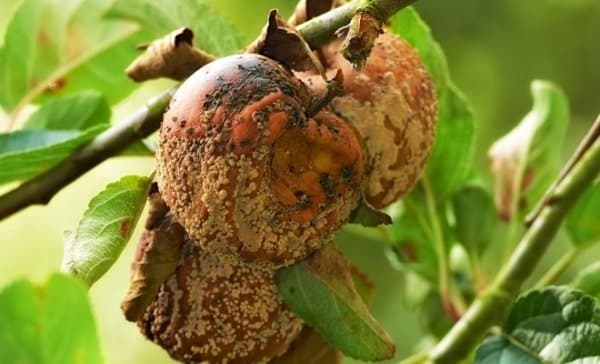
Fungus-infected apples mummify, turn black, and harden if the weather is cold and dry. In humid, warm summers, most apples are affected by fruit rot during the filling and ripening stages. Part of the crop dies during storage and transportation.
Monilial burn
The first signs of a monilial burn may appear in the spring. In May, on apple trees, you can see leaves that stand out with a red leaf color in the region of the central vein.
The infection affects:
- leaves;
- petioles;
- inflorescences;
- ovary.
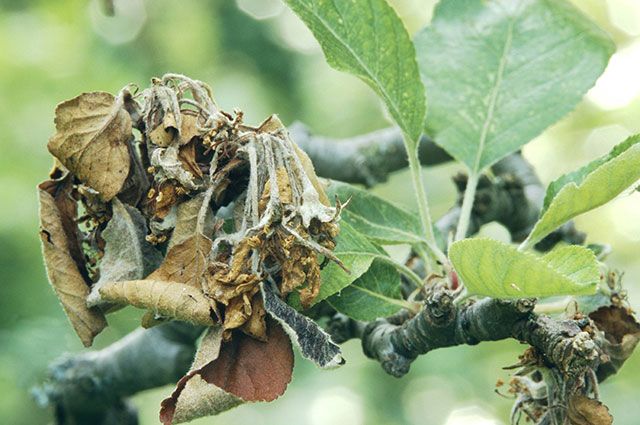
On examination of the underside of diseased leaves, small white conidial pads can be seen.Infection (monilinia mali) causes the fruitful shoot (leaves, ovary) to dry out. There is no monilial burn in mature fruits.
Stages
The life cycles of the fungus occur during the fruiting period of the apple tree. For the fungus monilinia fructigena, which causes fruit rot, 2 stages are characteristic: conidial, sclerocial. The causative agent monilinia mali may still have a rare third stage - marsupial.
Conidial
At this stage, a mycelium is formed from unicellular colorless conidia in the form of a large number of chains. Conidia spread through raindrops, gusts of wind, insects.

Fruits, the surface of which has mechanical damage, suffer from infection. They are formed as a result of bad weather or due to insect pests. A larger percentage of apples suffer from fruit rot if the weather is warm and rainy in summer.
Sclerocial
This stage occurs during the period when the apple tree is at rest. The fungus in the form of a mycelium hibernates in unharvested and fallen apples or in cracks in the bark.
Optimal conditions for development
The degree of infection of an apple tree depends on the intensity of sporulation. It is determined by weather conditions. The optimal values of humidity, air temperature, increasing the activity of the fungus, are shown in the table.
| Characteristic | Value |
| Humidity | > 90% |
| Temperature | 13 to 15 ° C |
How does infection occur
Spores lead to disease, they penetrate into apples and tree tissues through micro and macro cracks. The main reasons leading to moniliosis of apple trees:
- vital activity of insect pests;
- the presence of infected apples, their contact with healthy fruits;
- other diseases of the apple tree;
- the variety has a low resistance to fungi monilinia mali, monilinia fructigena;
- poor care of fruit trees, lack of preventive measures.
The infection is spread by wind, rain, insects, dirty garden tools. Long winter with frosts, snowfalls and long spring, which does not please with warm, sunny days, contribute to the appearance of the disease. The fungus enters the warehouse together with the dirty storage container.
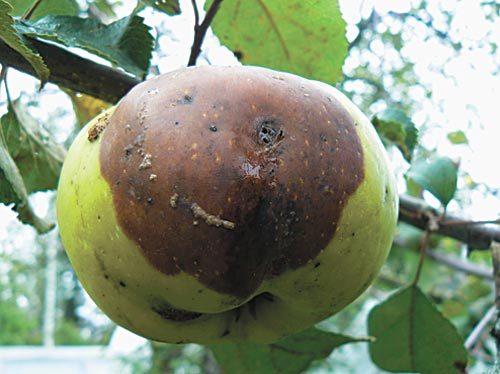
Description of the disease
The disease initially affects the trunks of fruit trees. Fungal spores get on the fruit, so apples are affected by moniliosis before and after harvesting. The infection is not afraid of frost, its active spread occurs during the period of flowering and fruit setting.
Symptoms and first signs of infection
It is possible to determine that the tree is sick 5 days after infection. Symptoms speak about moniliosis:
- brown spots on apples;
- carrion;
- small fluffy pads on fruits;
- twisted, dark leaves;
- brown flowers.

What is the danger of fruit rot for an apple tree
The fungus initially destroys the crop. In the absence of therapeutic and preventive measures, the tree dies over time. His weakened immune system is unable to cope with pathogens and pests.
Ways to protect apple trees from moniliosis
In the summer, measures are taken to prevent the disease. Fungicides are treated in spring, autumn and when symptoms of the disease appear. The spread of the fungus is prevented by the timely removal of infected apples, the introduction of root and foliar dressing, the purity of the trunk circle.

How to treat if an infection has occurred
Based on the timing of fruit ripening, the degree of infection of the tree, gardeners determine how best to fight the infection.
Mechanical destruction of infected plants
In the fall, the remaining fruits are removed from the trees. They are disposed of outside the garden. Spores do not die if apples are buried in the ground.
Infected fruits are the main source of infection, they are pecked by birds, eaten by pests (moth, weevil), spores are carried around the garden.
All dry shoots are cut and burned. When removing a diseased branch, up to 10 cm of healthy tree tissue is grabbed.Apple tree stems are covered with a layer of lime. For a greater effect, a fungicide solution is added to it. In summer, trees are examined, shoots affected by the fungus, ovaries, fruits are cut out, destroyed.

Chemicals
Chemicals tested by more than one generation of gardeners, Bordeaux liquid and copper sulfate are relevant in the fight against moniliosis of apple trees. Before the leaves bloom, use a solution of 3%, in autumn and summer - 1%. The prevention of disease is pest control, it is carried out with the help of insecticides: "Aktara", "Profi", "Decis".
Biological preparations
Treatment of apple trees with biological products gives good results. "Pentafag C" is used if there is little time left before harvesting. This remedy is safe for humans, so trees and fruits can be sprayed with its solution several days before picking apples.
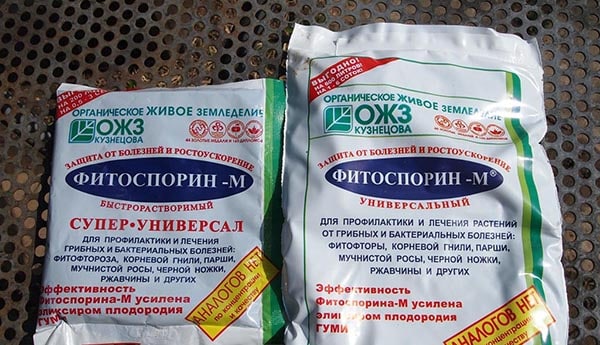
Harmless to humans and effective against fungus:
- Fitolavin;
- "Alirin";
- Fitosporin M.
Use of fungicides
Fungicides contain active substances that kill the fungus and inhibit its reproductive capacity. When treating apple trees for moniliosis, they resort to help:
- "Coming soon";
- Horus;
- Abiga Peak.
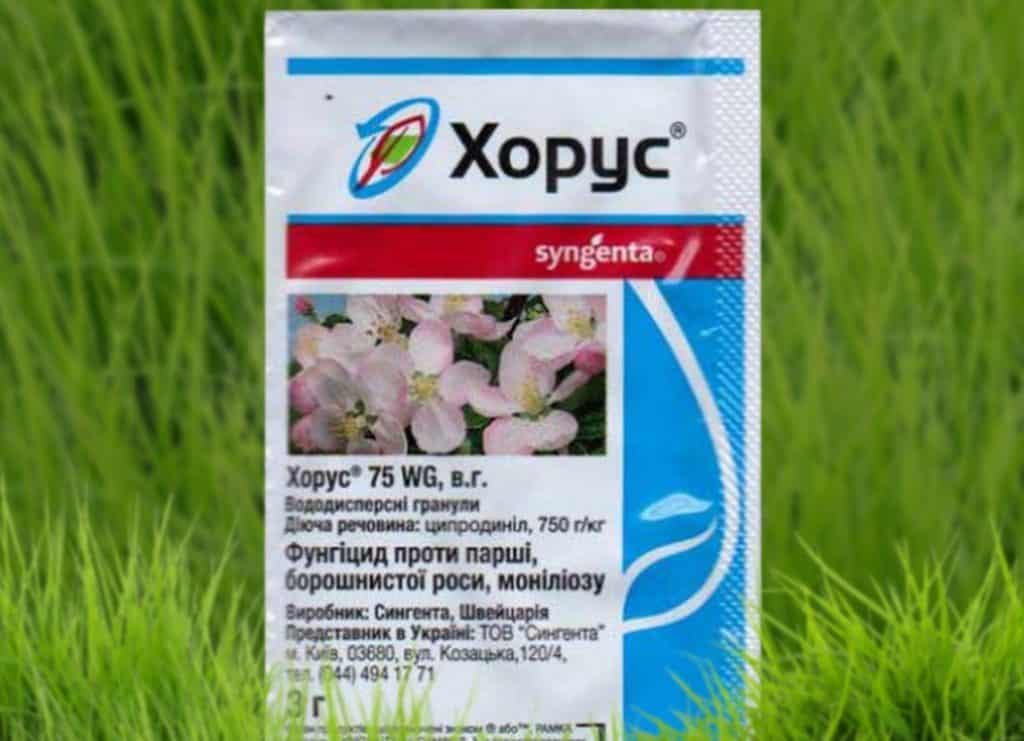
All parts of the diseased tree are sprayed with solutions of these drugs, the soil of the trunk circle is treated. Fungicides are used throughout the season. Processing is carried out once every 2 weeks.
Popular ways of fighting
There are no folk recipes that destroy the fungus. There are proven ways to control apple pests (moth, weevil), they can be used to prevent fungal diseases.
Scheme and processing time
The table lists the proven treatment regimens for moniliosis.

| A drug | Consumption | Usage time |
| "Hom" | 40 g for a bucket of water, for 1 apple tree 5 liters of solution | 1 time in the budding phase, 2 times after flowering |
| "Horus" | For a bucket of water 2 g of product | Preventive treatments are carried out all season (1 time in 2 weeks), for the purpose of treatment at least 2 times, flowering trees are not treated, at least 2 weeks must pass from the day of the last spraying to the collection of apple trees |
| Bordeaux mixture | Consumption of 1% solution - 200 ml for 1 m² | Processing is carried out once every 2 weeks. |
| "Stroby" | For a bucket of water 2 g of product | Trees are processed once every 2 weeks, the last time 30 days before harvesting |
How long can it take to get rid of fruit rot
One, two apple treatments do not get rid of fruit rot. Mushroom spores spread throughout the season. Disease symptoms can appear at any time. Therapeutic sprays should be carried out when signs of illness appear, preventive measures should be taken regularly.
Resistant apple varieties
There are no varieties with 100% resistance to fungi monilinia fructigena, monilinia mali. Apple trees of summer ripening suffer more from them.
The following varieties are considered relatively resistant:
- Parmen winter gold;
- Anniversary;
- Pepin is saffron;
- Welsey;
- Slav.
By choosing them, gardeners protect the garden from fruit rot.
